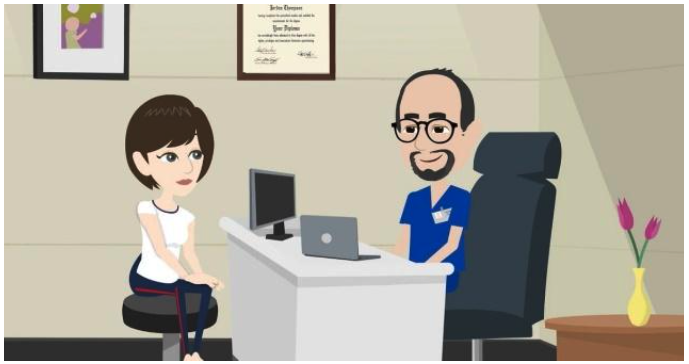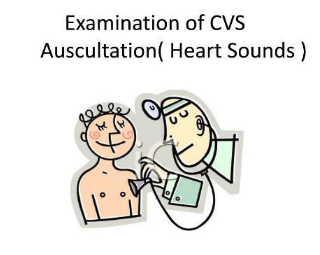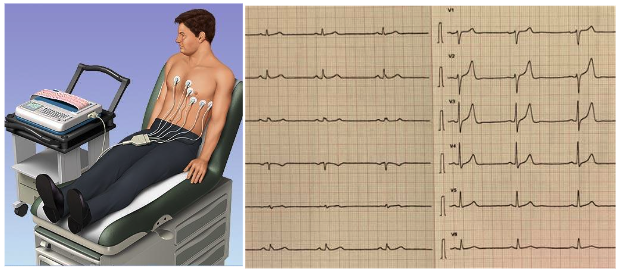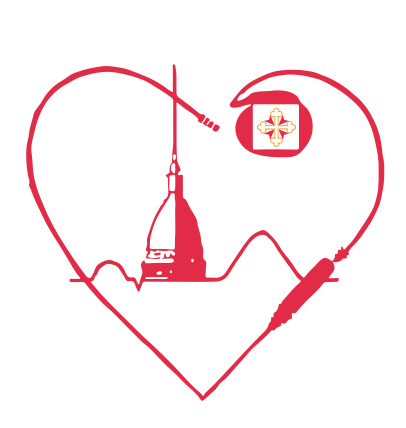What is meant by arrhythmological visit?
Arrhythmology is the branch of cardiology that deals with arrhythmias. The doctor who performs it is an arrhythmologist who is the cardiologist specialized in rhythm disorders . The arrhythmologist who also deals with performing electrophysiological study procedures and transcatheter ablation is an electrophysiologist .
The arrhythmological visit is therefore a cardiological visit carried out by a cardiologist specializing in arrhythmias aimed at a patient with rhythm disorders.
What does the arrhythmological visit consist of?
Phase 1 – Collection of patient history and clinical data (anamnesis)
In this phase of the arrhythmological visit, the doctor performs the so-called anamnesis which consists of a comprehensive assessment of the patient's health status. Each disease must be evaluated in the general clinical context of a patient which includes age, sex, activities performed, presence of cardiovascular risk factors, presence or absence of previous or current concomitant diseases and their possible pharmacological or surgical treatments.
We then turn to the rhythm disorder that led the patient to the current visit by reconstructing the onset times of the disorders themselves, the ways in which the symptoms manifest, their frequency, the impact they have on the performance of daily activities and their psychological implications.

At this point the arrhythmologist will review all of the patient's previous medical documentation in great detail: previous visits, electrocardiograms, holter monitors, echocardiograms, cardiac magnetic resonance imaging, coronary angiography, medical records or discharge letters from previous hospitalizations in order to precisely frame the patient's condition up to that point.
It is essential that the patient has with him, at the time of the visit, all previous cardiac and non-cardiological clinical documentation.
Phase 2 – Cardiovascular Objective Examination
The arrhythmologist is first of all a cardiologist and will carry out a cardiological examination which includes:
- blood pressure measurement
- palpation of peripheral pulses to assess arterial circulatory status
- search for peripheral edema and/or presence of jugular turgor to evaluate a possible state of congestive heart failure
- lung auscultation to assess any signs of decompensation or associated lung disease
Auscultation of the heart will guide you towards the presence or absence of structural, valvular, muscular or congenital heart pathologies.

Phase 3 – Electrocardiogram
There is no arrhythmological visit without an electrocardiogram.
Born more than a century ago, the electrocardiogram has made the history of cardiology and even more of arrhythmology. Easy and quick to perform, it provides a whole series of information on the state of health of the heart.
In order to diagnose an arrhythmia, it is necessary to record it with an electrocardiogram.
In the absence of this recording we cannot establish with certainty the rhythm disorder the patient is suffering from. During the arrhythmological examination the arrhythmia may not be present, however the examination still provides the cardiologist with very precise indirect information.

Phase 4 – Diagnostic-therapeutic formulation
Based on the information gathered from the clinical data, the visit and the electrocardiogram, the arrhythmologist can in some cases already reach a definitive diagnosis. In other situations, however, he will only be able to formulate diagnostic hypotheses that, to be confirmed or excluded, will require the execution of other tests that will be prescribed at this time and reassessed in a subsequent visit.
Once a certain diagnosis has been reached, the arrhythmologist will set up the therapeutic strategy that he deems optimal for the patient and which may include pharmacological and non-pharmacological treatments such as ablative procedures or the implantation of pacemakers or defibrillators.

Who is an arrhythmological visit indicated for?
- Patients without previous diagnosis of arrhythmias
There are many symptoms that can be the consequence of a rhythm disorder: a feeling of palpitation, heart in the throat, skipped beat, but also shortness of breath, weakness, chest tightness, up to dizziness and fainting. In the presence of these symptoms, an arrhythmological visit can allow us to reach a diagnosis and adequately treat the heart rhythm disorders that cause it, or by excluding an arrhythmia, guide the patient towards a different cause.
- Patients with previous diagnosis of arrhythmias
Patients who already have a diagnosis of arrhythmia should undergo regular arrhythmological follow-up visits in order to evaluate the clinical course, the response to treatment and, if necessary, modify/optimise the therapy.
- Patients at risk of sudden death
Patients affected by structural heart disease such as dilated cardiomyopathy, hypertrophic cardiomyopathy, arrhythmogenic cardiomyopathy, hypokinetic ischemic heart disease, or ion channel diseases, such as long QT, short QT, Brugada Syndrome , even if they have never manifested symptoms or rhythm disturbances, have an increased risk of sudden arrhythmic events, even serious ones.

